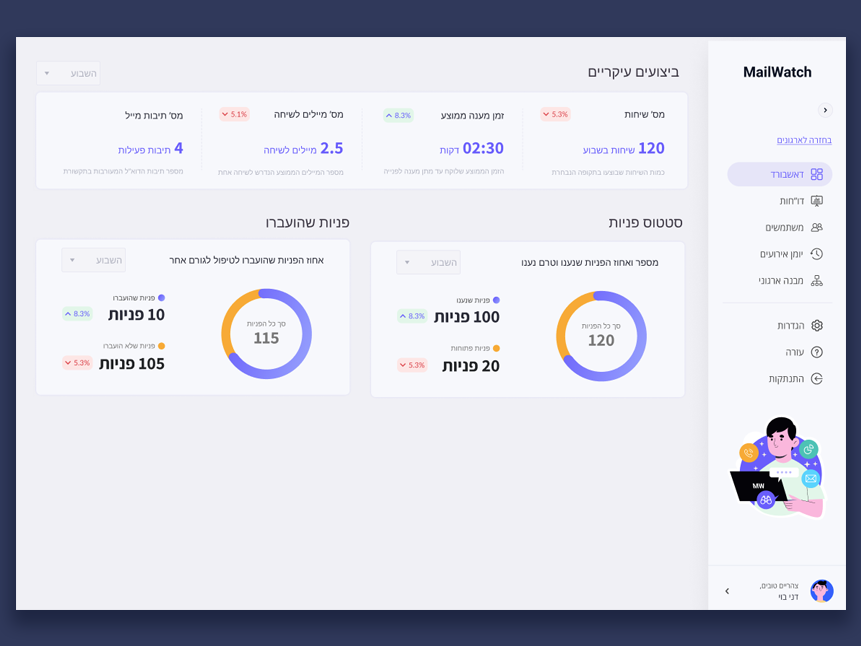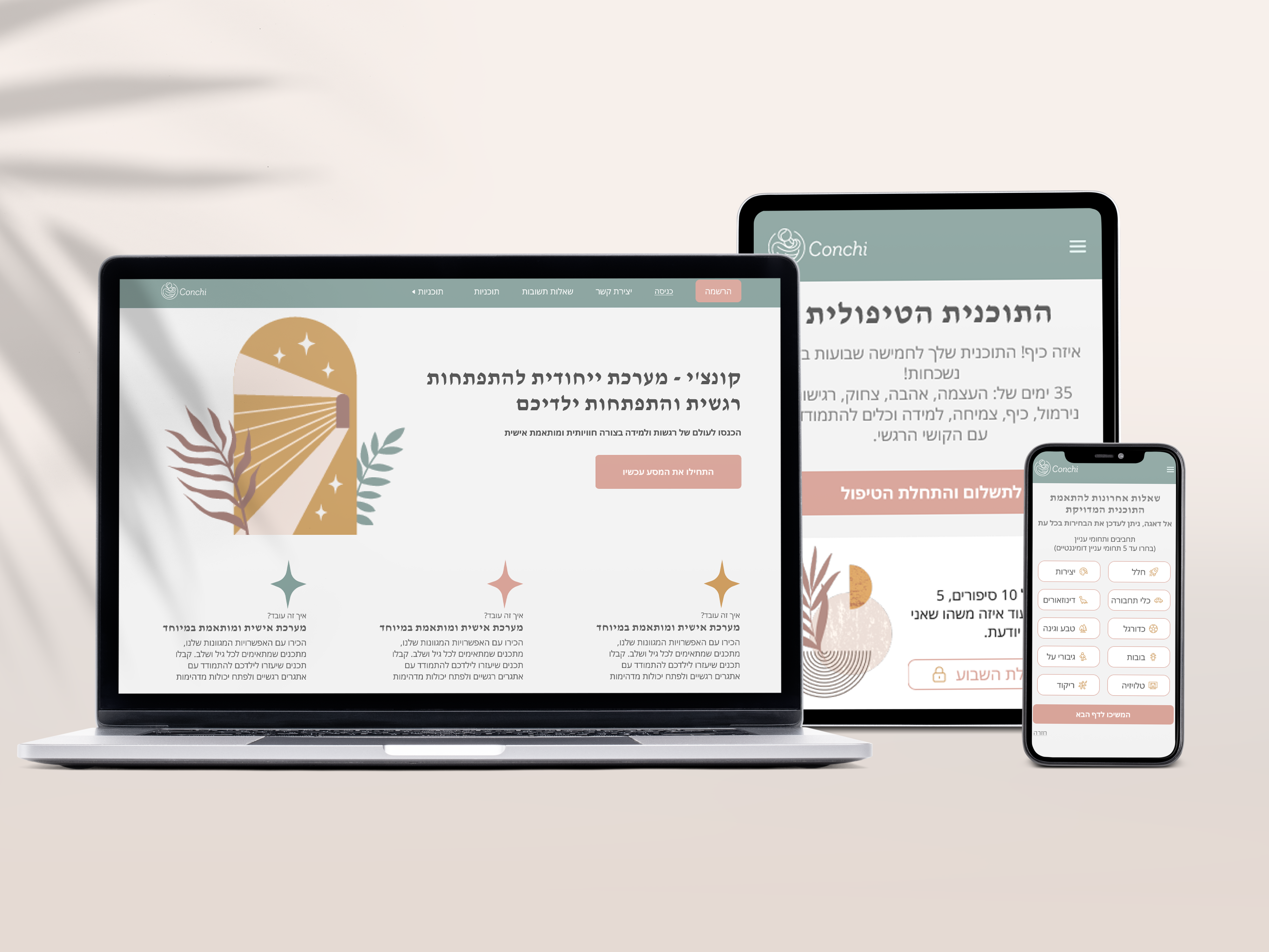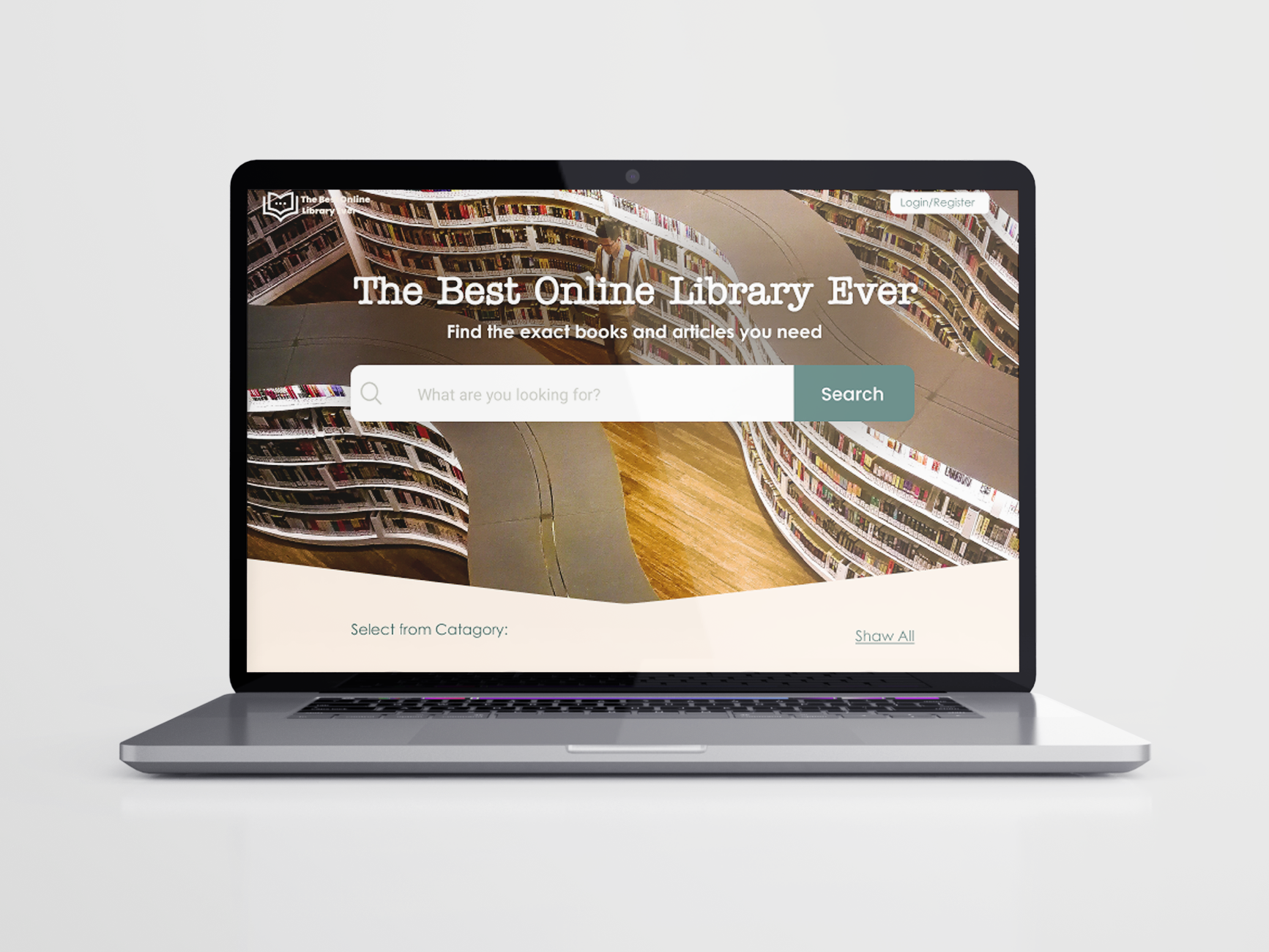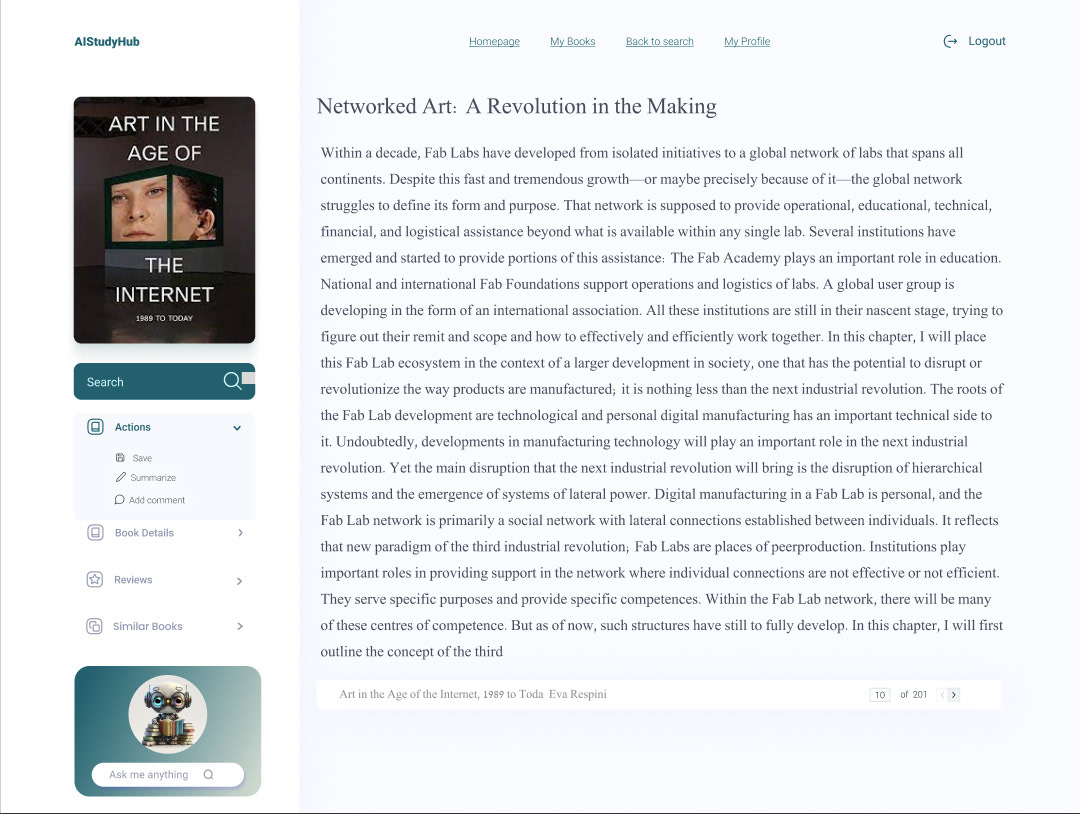
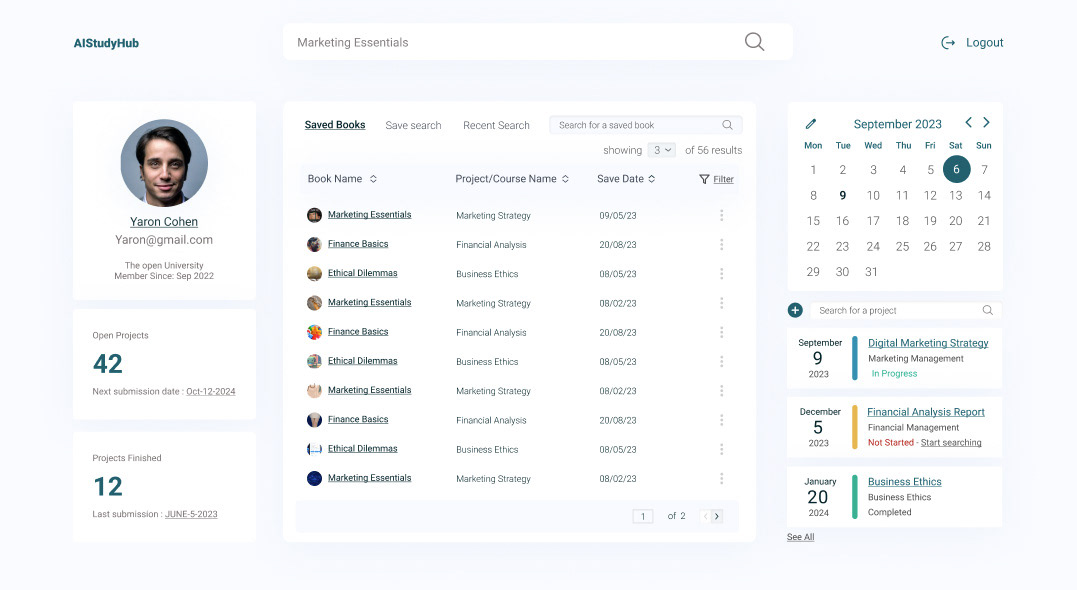
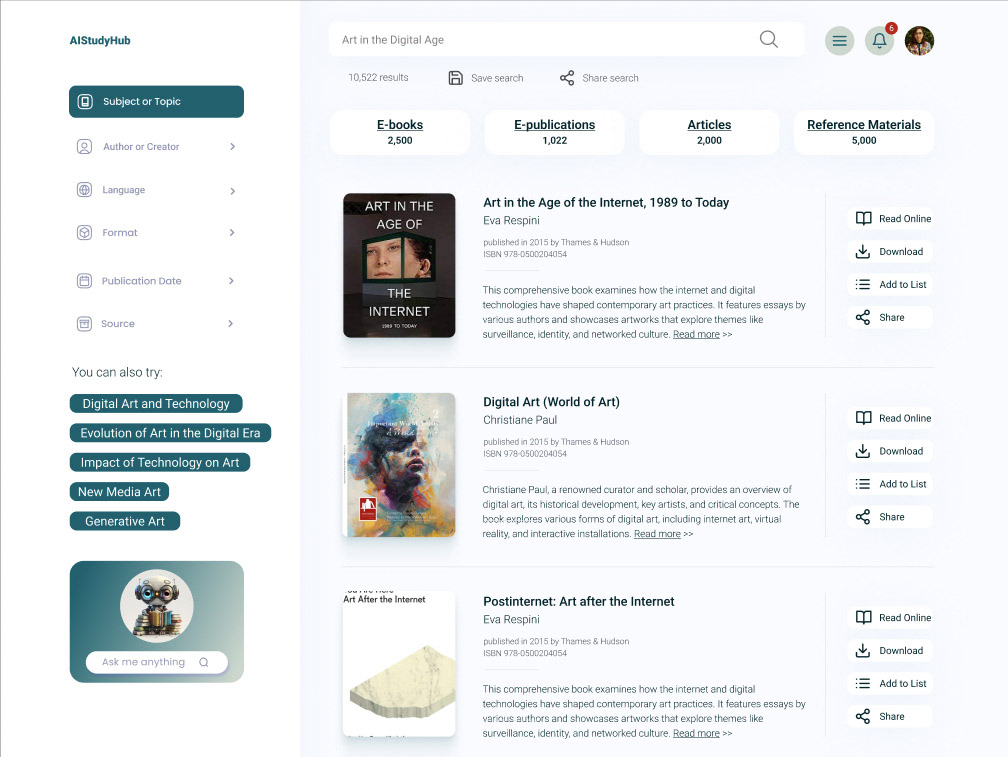
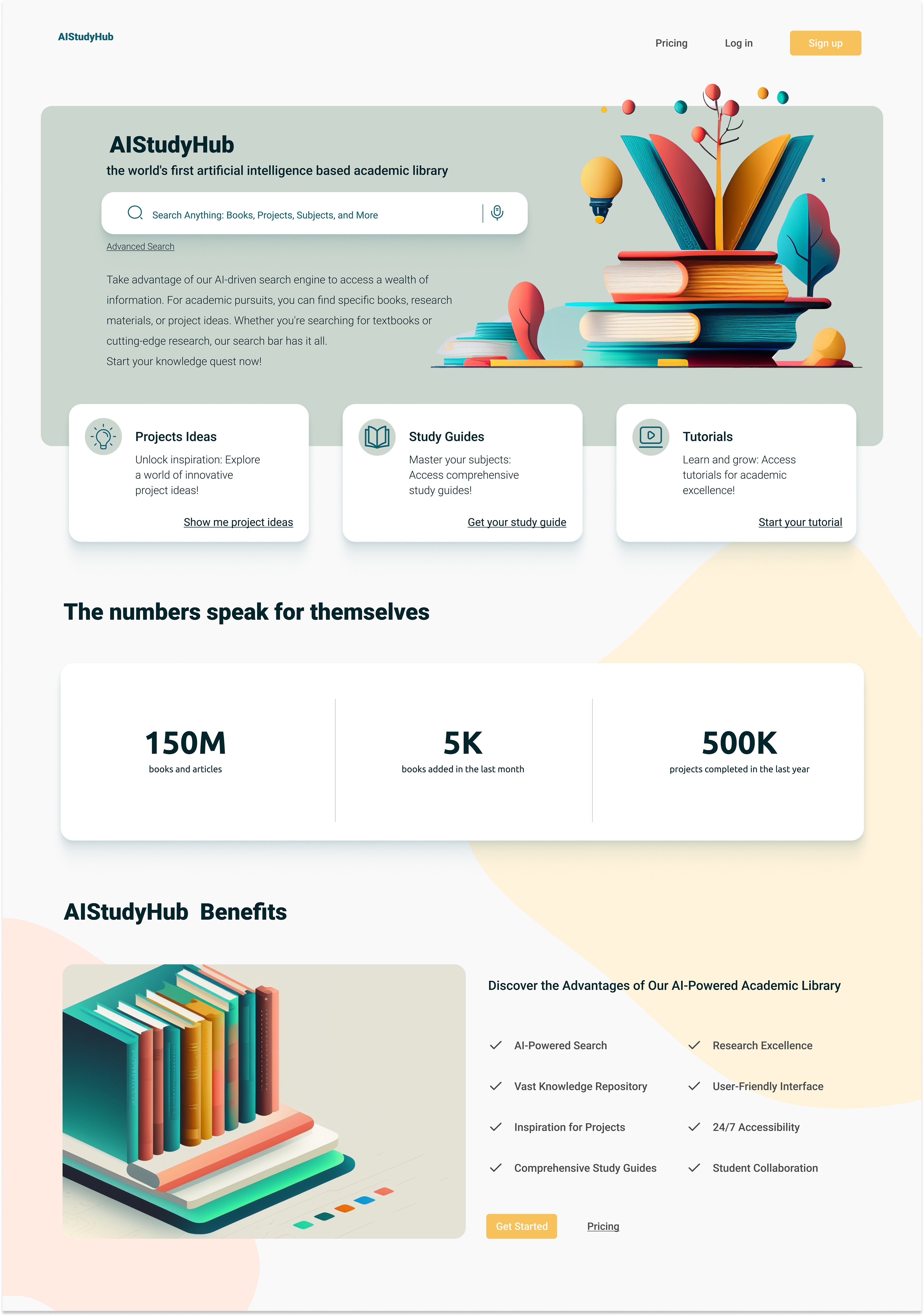
AIStudyHub
AIStudyHub is an AI-powered academic search engine that provides students with personalized recommendations and simplified access to relevant books, papers, and materials for enhanced research and learning
The Challenge 🎯
Develop an AI system that understands and caters to students' diverse needs, whether it's a quick research task or in-depth subject exploration, by providing them with the most relevant, high-quality academic materials, resources, and guidance
Work Process 🔍
To design the optimal AI-driven academic library, I thoroughly reviewed existing online library platforms, including university ones. At the time, no academic libraries were leveraging artificial intelligence on the market. Additionally, I directly engaged with students to understand pain points in their educational journeys and research processes.
Leveraging this research, I determined key challenges students faced in efficiently finding reliable materials and resources. I prioritized developing an AI to address these gaps and simplify students' academic pursuits.
This user-centered research phase was crucial to creating an AI library assistant focused on student goals and needs. The insights gathered directly guided the AI features and capabilities powering AIStudyHub's personalized recommendations and streamlined search
Develop an AI system that understands and caters to students' diverse needs, whether it's a quick research task or in-depth subject exploration, by providing them with the most relevant, high-quality academic materials, resources, and guidance
Work Process 🔍
To design the optimal AI-driven academic library, I thoroughly reviewed existing online library platforms, including university ones. At the time, no academic libraries were leveraging artificial intelligence on the market. Additionally, I directly engaged with students to understand pain points in their educational journeys and research processes.
Leveraging this research, I determined key challenges students faced in efficiently finding reliable materials and resources. I prioritized developing an AI to address these gaps and simplify students' academic pursuits.
This user-centered research phase was crucial to creating an AI library assistant focused on student goals and needs. The insights gathered directly guided the AI features and capabilities powering AIStudyHub's personalized recommendations and streamlined search
Findings 💡
Through student interviews, I found that 100% preferred a Google-like search bar as their primary starting point. This free search offers a sense of control and flexibility for research.
However, students lacked robust tools to refine results, sort selected materials, and add their notes or comments. Many students expressed that AI can help fill in gaps in research by finding related materials they may have missed. Some even wanted artificial intelligence that could summarize or rephrase the content to better suit their needs.
Standard search engines did not provide the level of personalization, recommendation, or assistance that the students envisioned. There was a need for an AI that could understand the context behind queries, recommend relevant materials, and enable students to curate and engage with selected content. The AI will serve as a helpful guide throughout the research process, rather than just retrieving a list of generic links
User Persona
Based on student research, I identified two core user personas representing common academic challenges:
Sharon Dor: A motivated undergraduate looking to excel in classes and interested in exploring subjects deeply. She wants to absorb as much knowledge as possible to support years more of study.
Yaron Cohen: A busy working professional pursuing a degree part-time for a promotion. He is short on time and seeks only the most relevant materials for specific coursework needs.
These two personas encapsulate contrasting needs - in-depth subject matter mastery versus concise, targeted content. An effective AI assistant must cater to both learning styles by understanding users' contexts and goals
Yaron Cohen: A busy working professional pursuing a degree part-time for a promotion. He is short on time and seeks only the most relevant materials for specific coursework needs.
These two personas encapsulate contrasting needs - in-depth subject matter mastery versus concise, targeted content. An effective AI assistant must cater to both learning styles by understanding users' contexts and goals

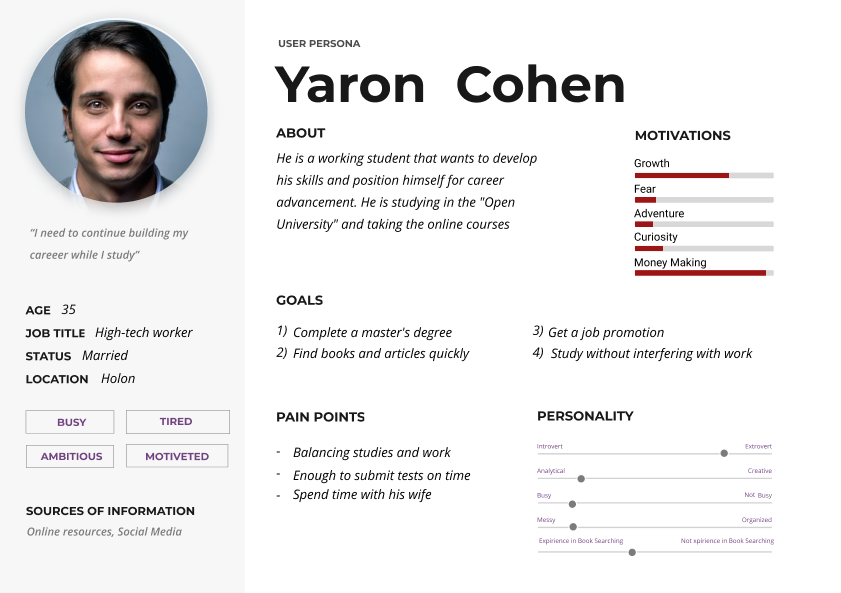
User Journey
Colors
For AIStudyHub, I wanted the main color palette to evoke a sense of energy, optimism, and approachability. These colors align with the friendly, student-focused tone I wanted to set for the platform. The green speaks to growth, renewal, and the natural world. While the yellow-orange radiates warmth, joy, and enthusiasm for learning.
My inspiration draws from the positivity of youth culture and integrating technology seamlessly into student life. The bright colors aim to be stimulating but not overbearing. I balanced them with clean white space and soft shadows.
This modern, lively palette aims to engage students and complement the AI assistant's friendly persona. The goal is for users to find the interface inviting and to perceive the AI as a helpful, trustworthy guide for their academic journey
My inspiration draws from the positivity of youth culture and integrating technology seamlessly into student life. The bright colors aim to be stimulating but not overbearing. I balanced them with clean white space and soft shadows.
This modern, lively palette aims to engage students and complement the AI assistant's friendly persona. The goal is for users to find the interface inviting and to perceive the AI as a helpful, trustworthy guide for their academic journey
Typography
My primary typeface, Roboto, serves as the cornerstone of the design, appearing throughout the site. This selection was guided by a desire for a friendly, versatile, and aesthetically pleasing typeface that could perform exceptionally well at various sizes and weights.
The rounded edges and variation of Roboto's weights allow it to convey both clarity and warmth across headlines, subheads, and body text. This versatility supports good information hierarchy and scannability.
While Roboto takes center stage, I have also incorporated the classic David font for the academic reading sections. David's serif evokes tradition and studiousness, while the proportions keep it contemporary. This classic font connects reading materials to timeless literature.
Together, these complementary typefaces aim to create a harmonious and highly functional reading environment that complements the overall friendly, modern aesthetic. Typography plays a significant role in setting the right tone and enhancing the user experience. My choices reflect a careful balance between aesthetics, readability across screens, and user-friendly functionality
The rounded edges and variation of Roboto's weights allow it to convey both clarity and warmth across headlines, subheads, and body text. This versatility supports good information hierarchy and scannability.
While Roboto takes center stage, I have also incorporated the classic David font for the academic reading sections. David's serif evokes tradition and studiousness, while the proportions keep it contemporary. This classic font connects reading materials to timeless literature.
Together, these complementary typefaces aim to create a harmonious and highly functional reading environment that complements the overall friendly, modern aesthetic. Typography plays a significant role in setting the right tone and enhancing the user experience. My choices reflect a careful balance between aesthetics, readability across screens, and user-friendly functionality



